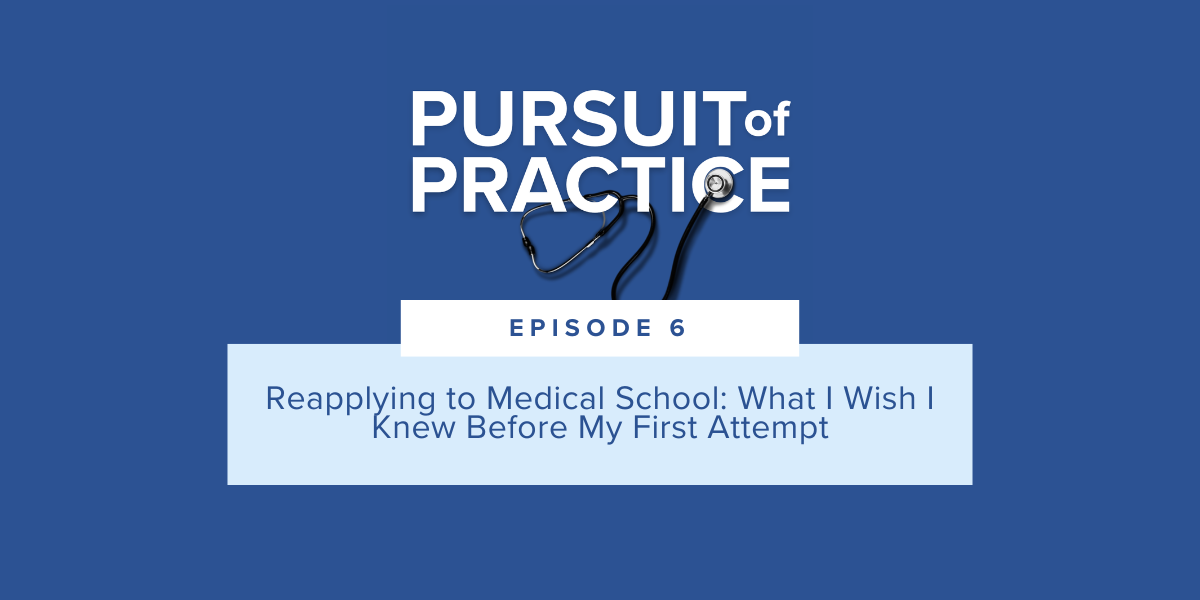It’s no secret that the medical school admissions journey is exhausting. In addition to internships, volunteering, and other extracurriculars, future doctors also have to ensure they take the required and recommended courses in college. Then there’s a little exam called the MCAT that’s totally a walk in the park, right?
All this culminates in actually applying to medical school, a feat that doesn’t have universal deadlines, but rather better times than others to apply. Unlike the undergraduate application process, applying to medical school is complex, involving multiple applications and interviews. Below is a month-by-month overview of the medical school admissions process to help you stay organized and on track.
Breaking Down the Medical School Admissions Process
The Primary Applications
Before we jump into the medical school admissions timeline, it’s important to look at the two applications you will need to complete at a minimum. The primary application is the first application you will submit between May and December of your application year. For example, if you’re applying to begin school in Fall 2026, the latest you should apply is December 2025 (assuming the medical school still accepts applications).
Most medical schools in the U.S. use the American Medical College Application Service® (AMCAS®), which is the Association of American Medical Colleges’ (AAMC) medical school application processing service. If you’re applying to a DO (Doctor of Osteopathic Medicine) school, you would use the American Association of Colleges of Osteopathic Medicine Application Service (AACOMAS). Public Texas medical schools use the TMDSAS.
Components of the primary medical school application include official transcripts/GPA, resume of activities, personal statement, letters of evaluation/recommendation, and questions regarding any past criminal activity. Rather than filling out a separate application for every single school, the application services allow you to apply to multiple schools with a single application.
AMCAS, TMDSAS, and AACOMAS Application Deadlines
|
Application Service |
Application Opens |
You Can Start Submitting Applications On: |
App Verification/Sent to Schools: |
Application Deadline |
|
AMCAS |
May 1, 2025 |
May 27, 2025 |
June 27, 2025 |
School Specific |
|
AACOMAS |
May 5, 2025 |
May 5, 2025 |
May 5, 2025 |
School Specific |
|
TMDSAS |
May 1, 2025 |
May 15, 2025 |
2-4 weeks after submission |
October 1, 2025 |
The Secondary Application
The secondary application will be sent to you by the schools you applied to. In most cases, schools will send you a secondary application, whether they reviewed your primary application or not. These applications are unique to the individual school and will generally ask you to explain why you’re interested in their school/program, among other questions. After you submit your secondary applications, the schools decide if they want to invite you to interview, and then they will make their final admissions decisions.
Your Medical School Admissions Application Year Timeline
January-March
- Start preparing for the MCAT. Prepping for the MCAT requires focus, commitment, and a solid plan. Start by creating a personalized MCAT study schedule that allows you to dedicate time each day to reviewing material, practicing questions, and taking full-length practice tests over a few months. For independent learners, a self-paced online MCAT course can provide the structure and resources you need. If you’re aiming for a top score, the Blueprint MCAT 515+ Course offers a comprehensive solution to help you achieve your goal. For those seeking more targeted support—especially if you’re retaking the exam—a private MCAT tutor can provide the personalized guidance needed to reach your desired score.
- If you haven’t taken the MCAT yet, be sure to schedule it as early in the year as possible. Ideally, you’ll test no later than June. This ensures your scores are available in time for your application to be considered complete. Remember, submitting your application early significantly boosts your chances of admission, so it’s crucial to have your MCAT scores ready when you apply.
- Check the Medical School Admission Requirement (for future MDs) or the College Information Book (for future DOs) to confirm you’ve completed or are on track to complete all your course requirements.
- Begin researching medical schools. Start looking into different medical schools to see which ones align with your career goals and values. Take note of their admissions requirements and deadlines.
- Start requesting letters of recommendation or at least identifying who you will ask.
- Begin brainstorming and writing your medical school personal statements and other primary application essays.
Sign up to get expert tips and exclusive invites to free MCAT classes and medical school admissions workshops!
April-June
- The AMCAS and TMDSAS officially open in May. You can begin working on primary applications, but you cannot submit them until later.
- The AACOMAS (American Association of Colleges of Osteopathic Medicine Application Service) also opens the first week of May and can be completed as soon as it’s available.
- Order your official transcripts from every college and university you’ve attended and submit to your application service(s).
- Keep a diligent eye on your inbox and watch out for emails that confirm your submitted apps are complete or incomplete. Fix any errors or submit missing items as soon as possible.
- Register for and take the Casper test. The Casper (Computer-Based Assessment for Sampling Personal Characteristics) test is a situational judgment test (SJT) that aims to measure traits like professionalism, ethics, communication, and empathy. The Casper is administered by Altus Assessments, which also manages Duet, a questionnaire that helps gauge how well you fit with the values of medical schools. Some medical schools require both, and your application won’t be considered complete without it.
- Take the AAMC PREview Assessment. The PREview Assessment tests qualities that go beyond academic readiness, such as service orientation, teamwork, resilience, and reliability. This remote test opens in March and has test dates through October. Not all medical schools may require you to complete the PREview Assessment. Check your schools’ requirements to determine whether it’s mandatory for you.
July-August
- AMCAS notifies applicants of verified primary applications or problems with verification.
- Once you’ve submitted your primary applications, begin researching and prewriting the questions found on your secondary applications. Complete and send secondary apps as soon as you receive them.
- Start checking your application status on the websites of the medical schools you applied to.
The End of Your Application Year/The Beginning of Your Matriculation Year
September-March
- Start preparing for the interviews you have been invited to. Practice makes perfect, especially when it comes to med school interviews. Check out these sample medical school interview questions. Conduct mock interviews alone or with a friend and craft genuine answers to common interview questions.
- Send update letters prior to receiving interviews, if appropriate.
- Continue completing and submitting secondary applications.
- Admissions decisions start rolling out mid-October for MD applicants. DO applicants may have already heard back.
- Send update letters and letters of intent/interest after completing interviews/getting placed on the waitlist, if accepted and appropriate.
- Review admissions and financial aid decisions. Negotiate financial aid packages. If you haven’t already, start applying to medical school scholarships.
- Attend Second Look and Admit Weekend activities.
April
- AMCAS and TMDSAS require you to make your final school decision by April 30.
- And now you’re done! Time to celebrate and start planning for the next stage of your life!
Final Thoughts
With most medical schools operating on rolling admissions, applying early is always in your best interest. A smooth and successful application season starts with organization and preparation. While the medical school admissions process can be complex, you don’t have to navigate it alone.
Whether you’re just beginning your MCAT prep or feel ready to tackle your med school applications, Blueprint MCAT is here to support you every step of the way with expert MCAT prep and admissions consulting.
Whether you need the flexibility of a Self-Paced Course, the instruction of a live 515+ Course, or the 1:1 attention of a private MCAT tutor, Blueprint MCAT has the MCAT prep option that works for your learning style!
Get started with a free MCAT diagnostic, one free practice exam, and tons more MCAT prep resources.
Schedule a free consultation to see how we can help you reach your medical school dreams!





